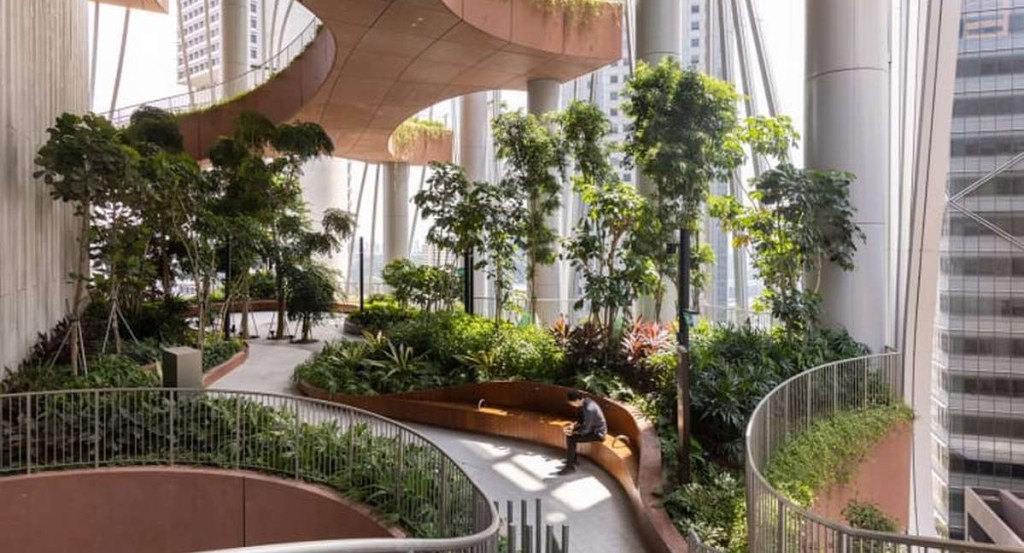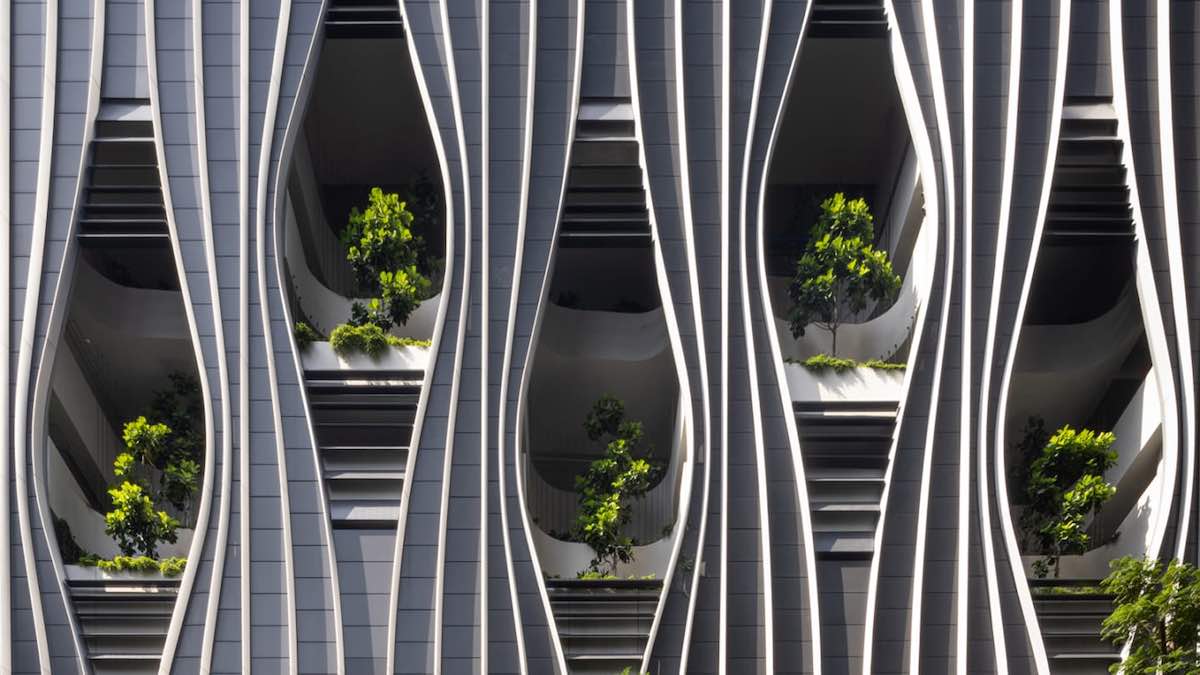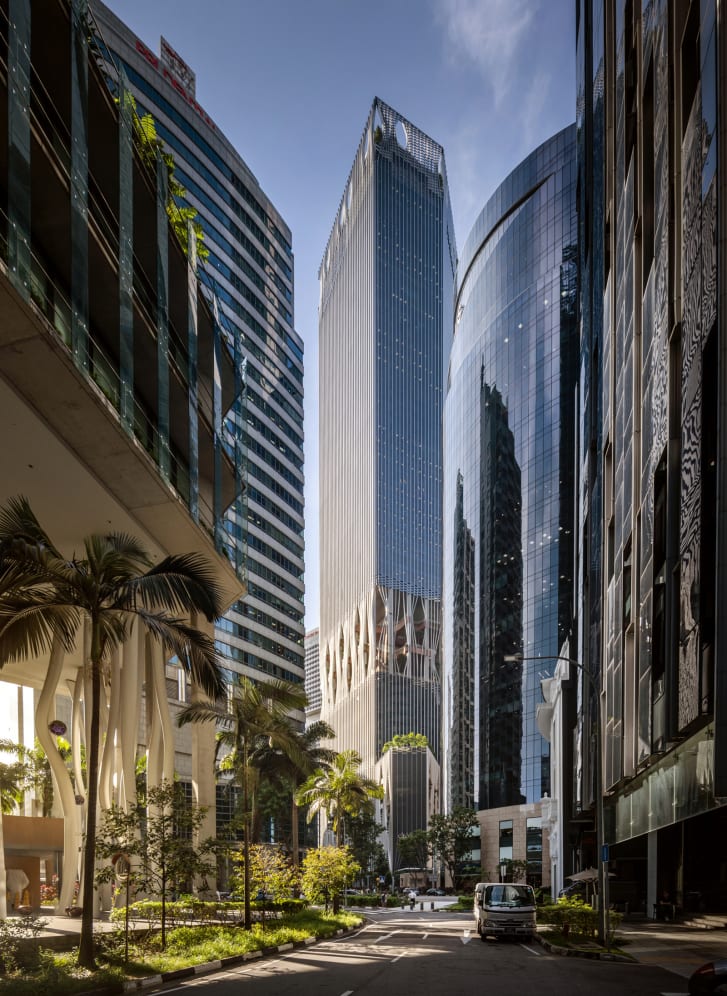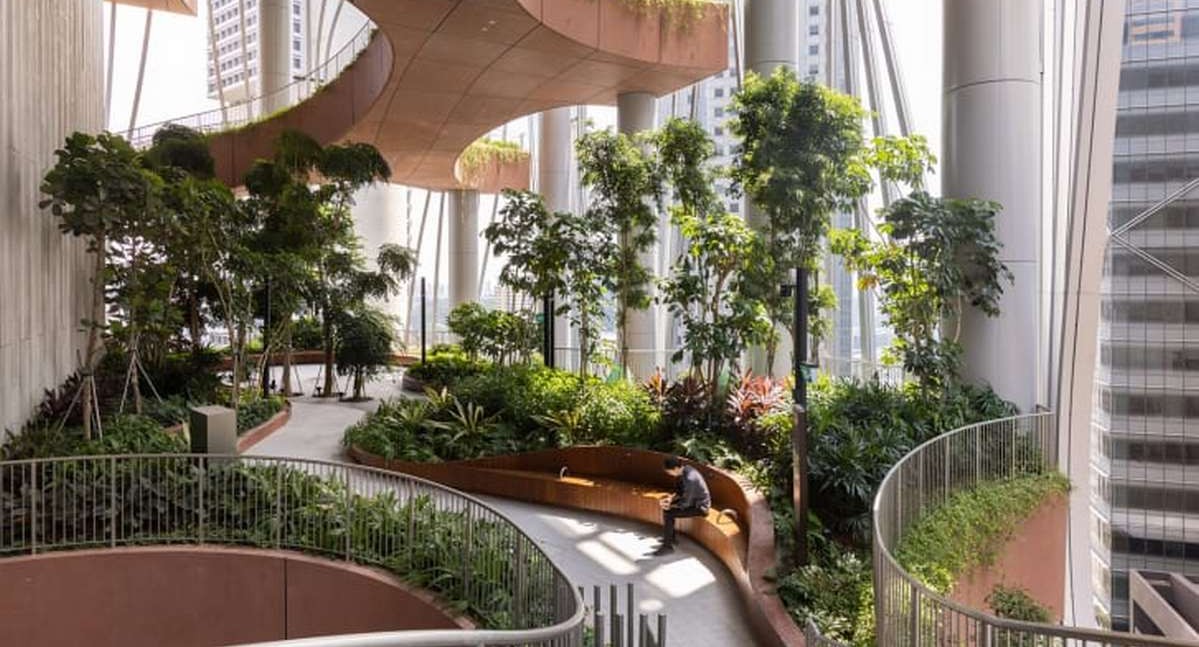
In case you’re planning a trip to the other side of the world’s richest city-state, the “biophilic” CapitaSpring tower in Singapore is now fully bursting with a publicly accessible urban forest.
In Singapore’s business district, you have to go 17 to 20 stories above street level to find wide open greenery.
On CapitaSpring’s “Green Oasis” floor, accessible to the public, a spiral path winds through gardens and small replicants of tropical forests, like the kind that stood there before Singapore came to be.
On the roof, three rooftop market gardens supply fruits, vegetables, herbs, and flowers to three on-site restaurants, and trees grow in nooks in the building’s facade as often as windows.
Ground broke in 2018, under the supervision of two of Europe’s greatest architecture firms—Carlo Ratti Associati and the Bjarke-Ingels Group.
“Due to the unique character of Singapore’s urbanism—both extremely dense and green—we decided to make the design a vertical exploration of tropical urbanism,” founder, Bjarke Ingels said in a statement.

They say the tower is “like a vision of a future in which city and countryside, culture and nature can coexist.”
In total, the 51-story building houses over 80,000 trees and plants across 90,000 square feet of landscaped area.

It’s a reflection of the belief of the nation’s founder, Lee Kuan Yew, who referred to the city-state as a “garden city.” Despite 6 million people filling an area smaller than Greater London, plants are easy to come by and are, in fact, a legal requirement in building local regulations.
MORE BIOPHILIC BUILDINGS: When Architect Asks AI to Design Futuristic Skyscrapers It Proposed a Vertical Forest
Take a tour with the video below…
SHARE These Photos To Anyone Looking To Visit Singapore…





















I think Opryland Hotel in Nashville has that beat – millions of plants and even a waterway inside! Better do a story on that.